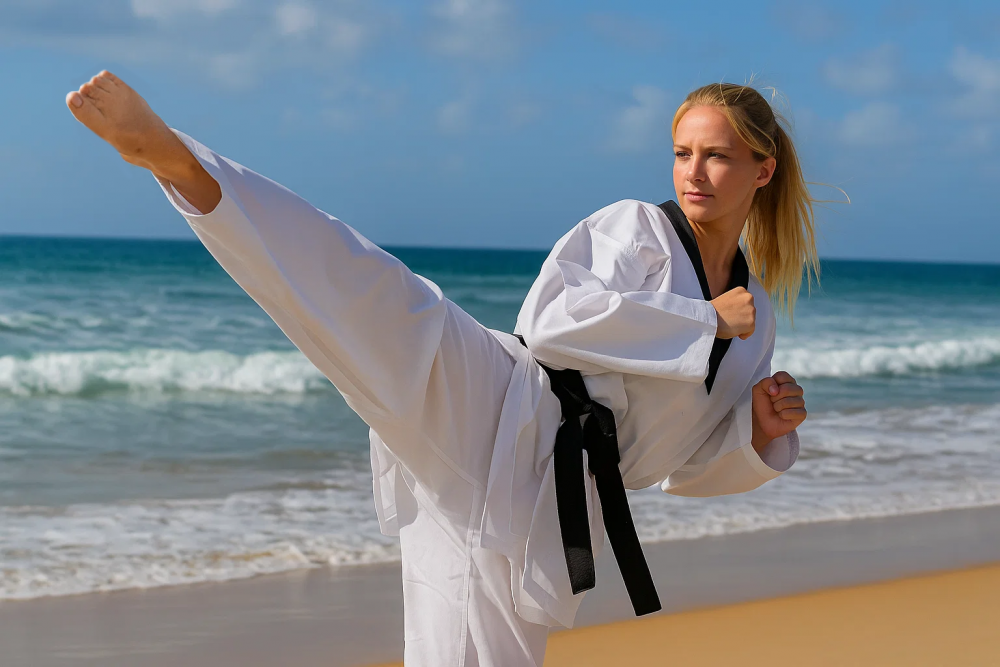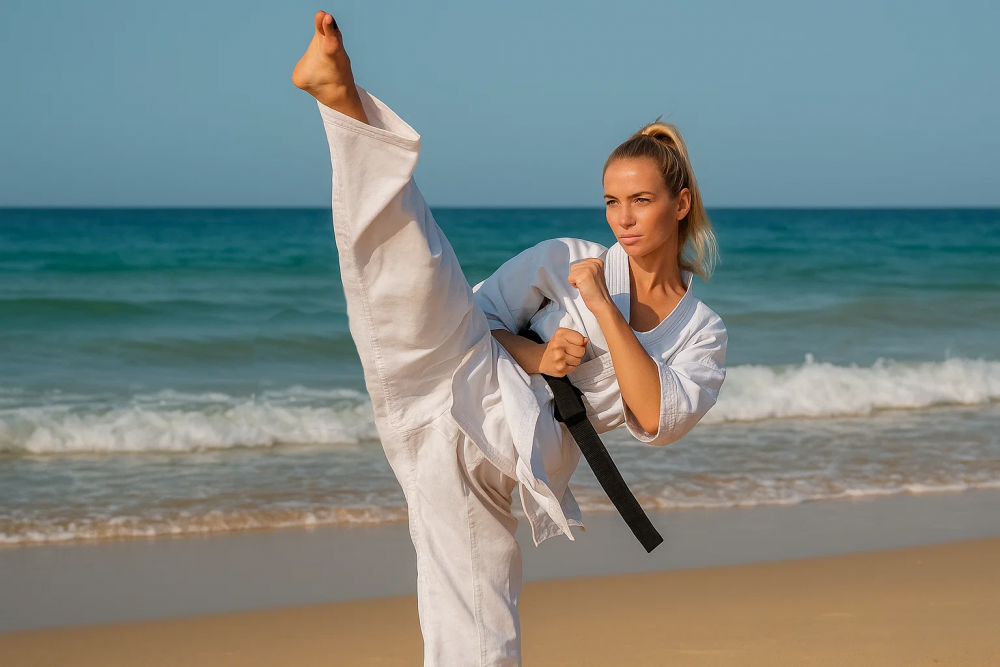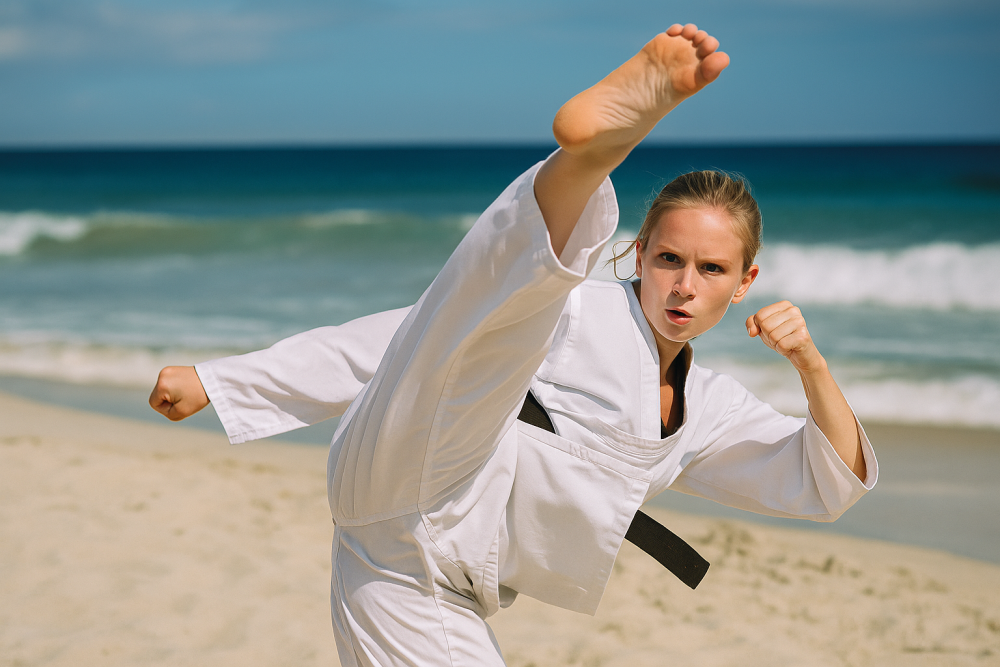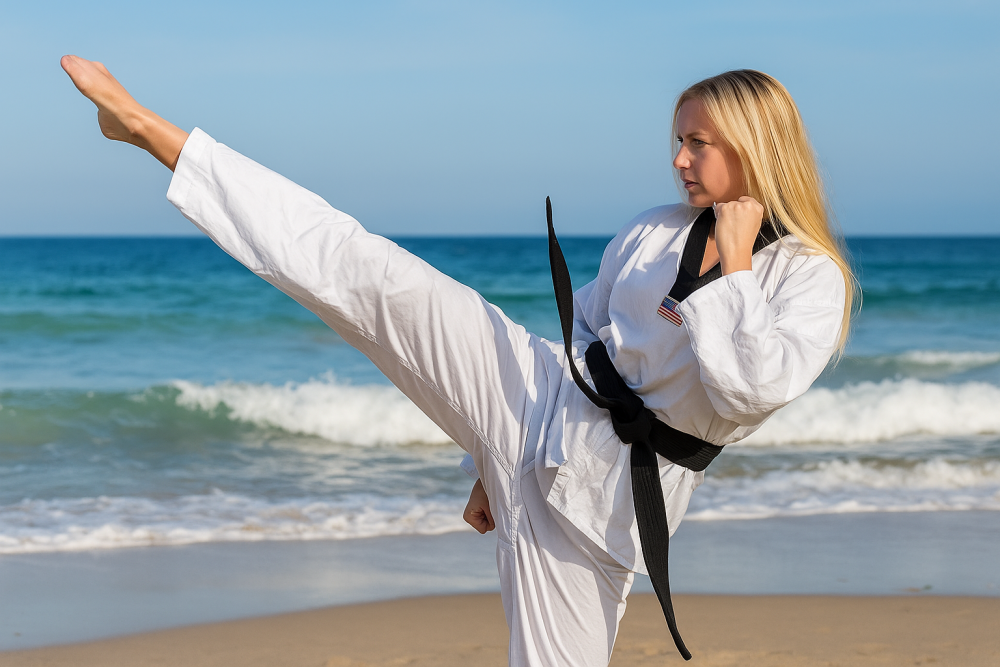Contents
- 1 Dollyo Chagi (돌려 차기) – Roundhouse Kick in Taekwondo
Dollyo Chagi (돌려 차기) – Roundhouse Kick in Taekwondo
Introduction
The Dollyo Chagi, commonly known as the Roundhouse Kick, is one of the most iconic and versatile techniques in Taekwondo. Known for its speed, power, and precision, this kick is frequently used in both sparring and demonstrations. Its ability to target multiple levels with devastating effect makes it a cornerstone of Taekwondo training and competition. This kick is present in many other martial arts under different names and a few variations as well.
Uses of the Roundhouse Kick
The Roundhouse Kick is applied in many contexts:
- Sport Sparring (Kyorugi): It is one of the highest-scoring techniques in Olympic Taekwondo due to its speed and ability to reach the head.
- Self-Defense: Useful for striking an opponent’s midsection or leg to create distance and disable movement.
- Demonstrations: Its aesthetic appeal makes it a crowd favorite in Taekwondo demonstrations.

Targets of the Roundhouse Kick
The Dollyo Chagi can be aimed at different levels:
- Low Section (Arae): Thighs or knees to limit mobility.
- Middle Section (Momtong): Ribs, solar plexus, or kidneys for power shots.
- High Section (Olgul): Head and face, often for knockout potential or high-scoring in competition.

Stretching Exercises for Dollyo Chagi
Flexibility is essential to execute the kick effectively:
- Hip Rotations – Loosen the hips to allow smoother pivoting.
- Seated Hamstring Stretch – Improves reach and reduces strain.
- Butterfly Stretch – Opens the hips for higher kicks.
- Lunging Hip Flexor Stretch – Increases mobility and reduces stiffness.
- Standing Quad Stretch – Prepares the supporting leg for stability.
Exercises to Prepare and Improve this Kick
To deliver powerful and controlled Roundhouse Kicks, build strength and coordination with:
- Shadow Kicking – Practice motion without resistance to refine form, do not kick with power or your knee will suffer the consequences.
- Resistance Band Kicks – Add tension for explosive strength.
- Step-Up Exercises – Strengthen supporting leg stability.
- Core Workouts (Planks, Russian Twists) – Improve balance and kicking control.
- Plyometric Drills (Jump Squats, Box Jumps) – Increase speed and explosive kicking ability.

Step-by-Step Guide to Dollyo Chagi
- Start in Fighting Stance (Kyorugi Jase): Feet shoulder-width apart, guard hands up.
- Chamber the Knee: Lift your rear leg, bending the knee toward your chest.
- Pivot the Supporting Foot: Turn your standing foot outward about 90–180 degrees for balance and power.
- Extend the Kick: Snap your leg outward in a circular path, striking with the instep or ball of the foot.
- Recoil Quickly: Retract the leg to maintain balance and prevent counterattacks.
- Return to Stance: Land smoothly and be ready for the next move.

Variations of the Roundhouse Kick
- Ap Dollyo Chagi (Front Leg Roundhouse): Faster but less powerful. It can be powerful if you add the hip to it.
- Dwi Dollyo Chagi (Spinning Roundhouse): Adds momentum and power.
- Jumping Roundhouse Kick: Increases reach and striking force.
- Multiple Roundhouse Kicks: Delivering consecutive kicks at different levels.
- Cutting Roundhouse Kick: Delivered diagonally, often to counter an incoming attack.
Recommendations for Practitioners
- Always warm up and stretch before practicing.
- Remember to aim with your knee the target you want to kick.
- Align your entire body to maximize the reach and power on your kicks.
- Focus on pivoting the supporting foot for maximum power and safety.
- Practice control over speed before increasing intensity.
- Use protective gear in sparring to avoid injuries.
- Train both dominant and non-dominant legs for balanced development.
- Record your kicks and analyze technique to identify improvements.
- Finally, keep your hands up! Drop your hands and say good bye to your nose.
Taekwondo Techniques
- Taekwondo Techniques Page
- Taekwondo Kicks
- Taekwondo Stances
- Taekwondo Punches and strikes
- Taekwondo Blocks
- Taekwondo Forms
- Taekwondo Sparring Training
- Stretching exercises for Taekwondo
Follow our Social Media!











